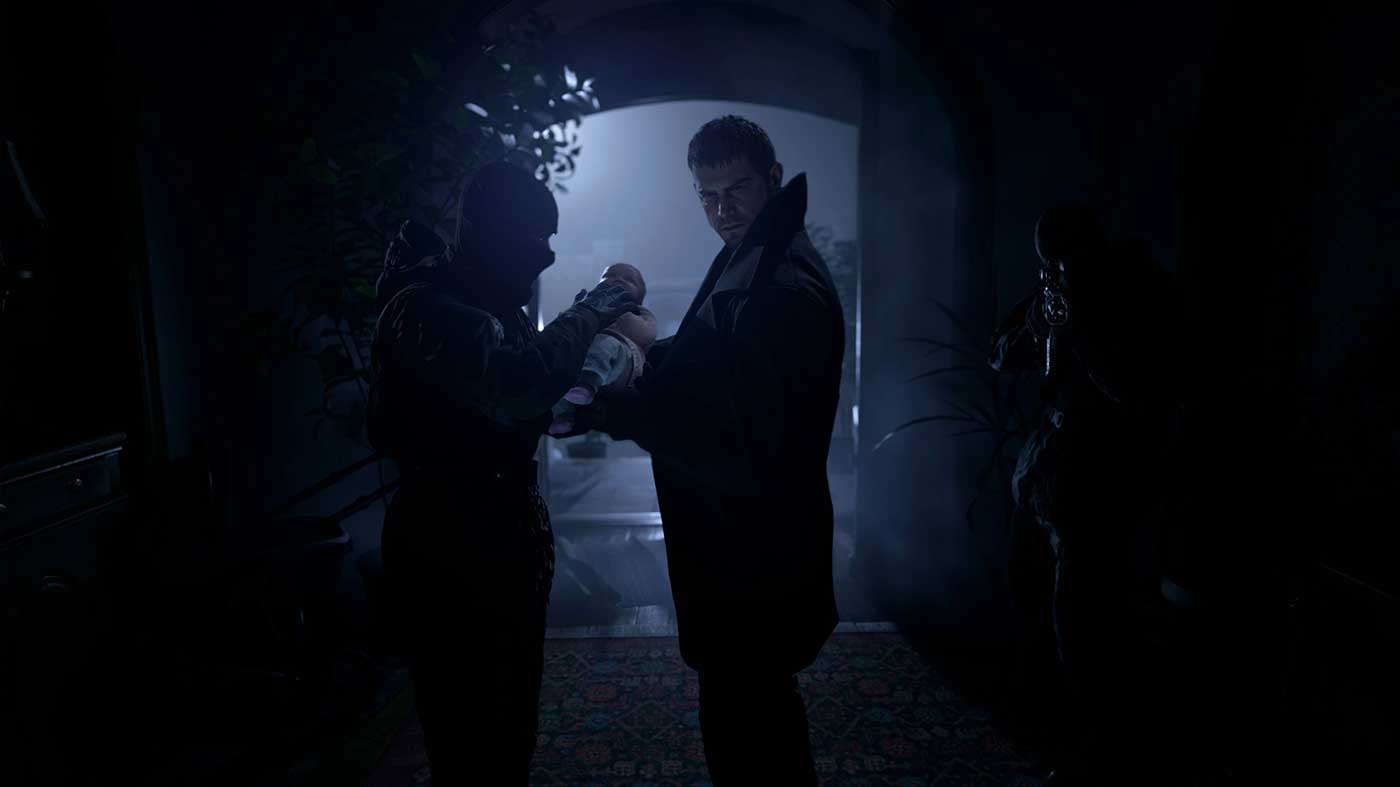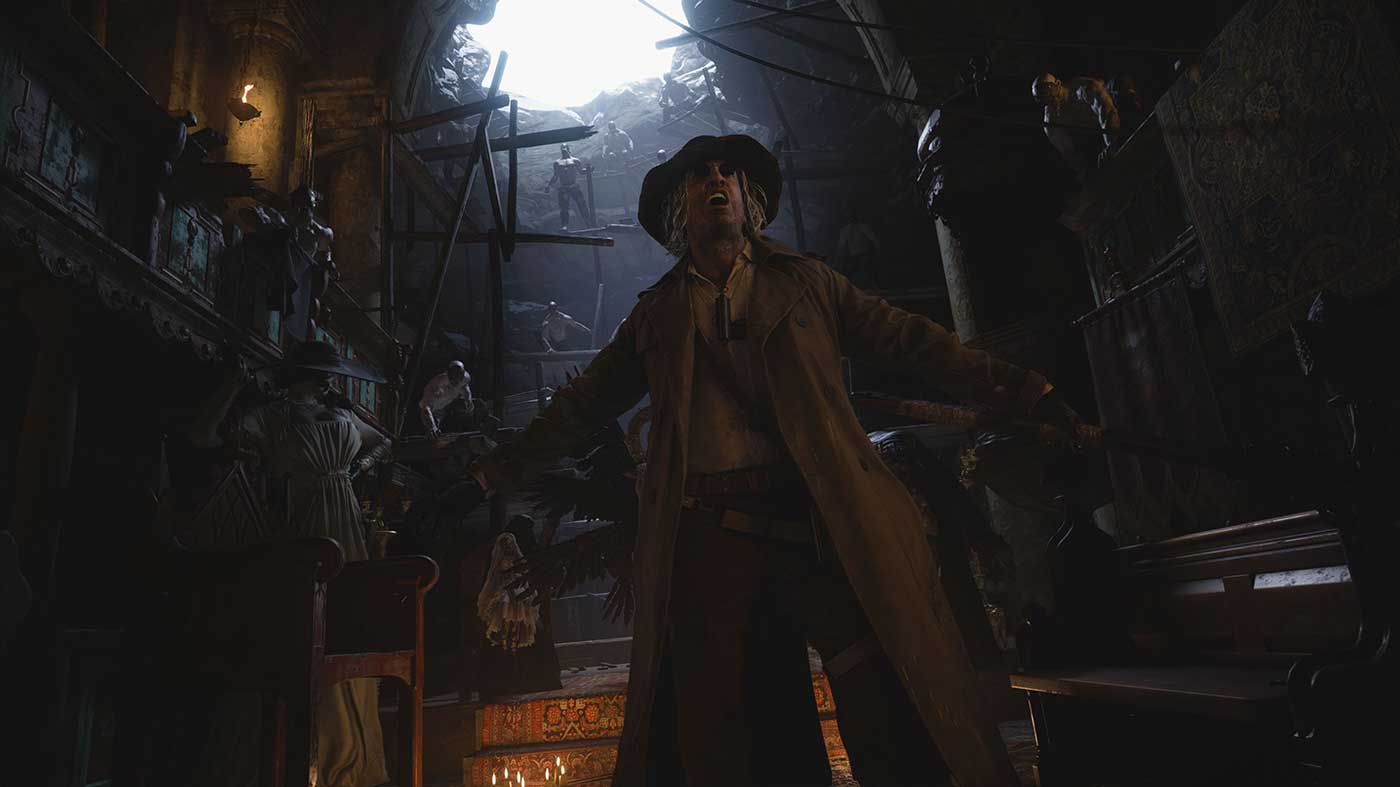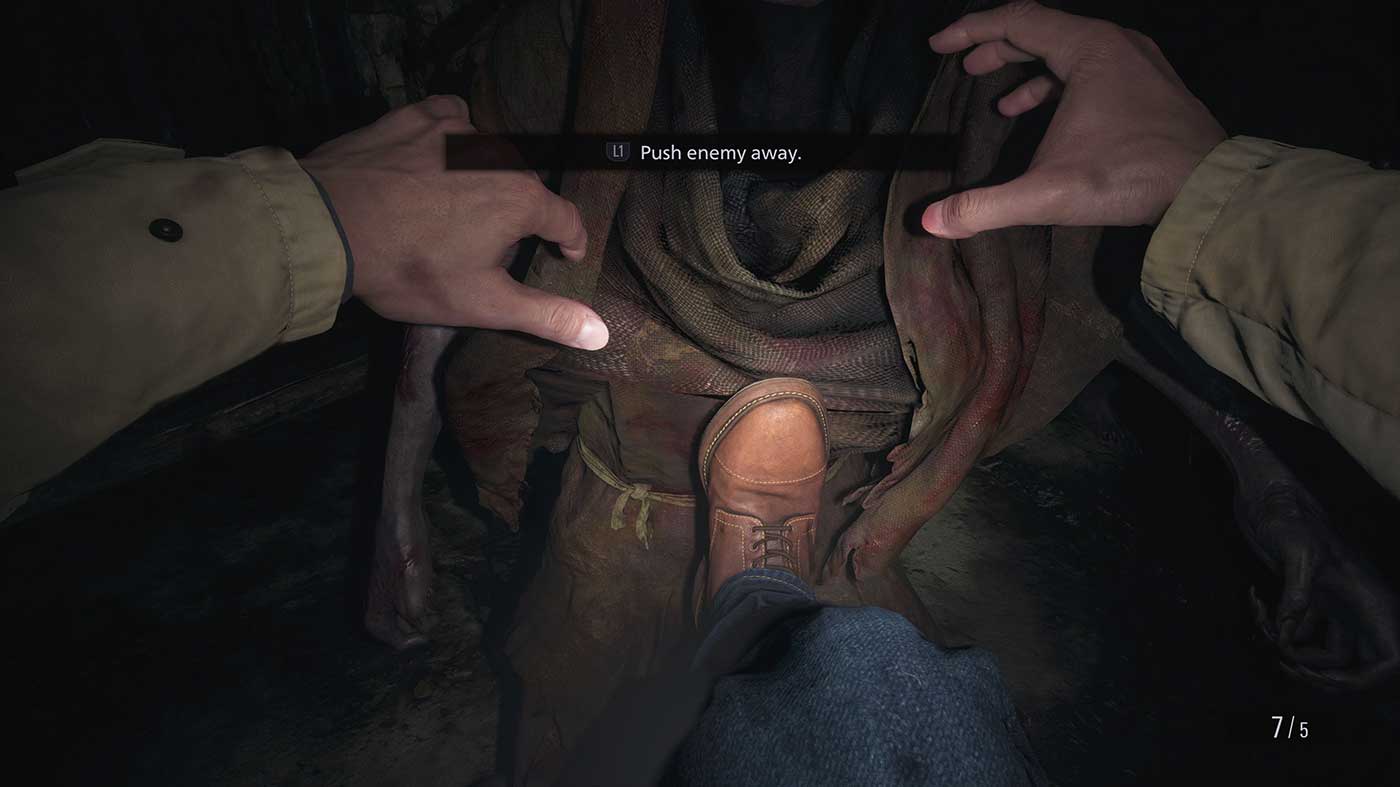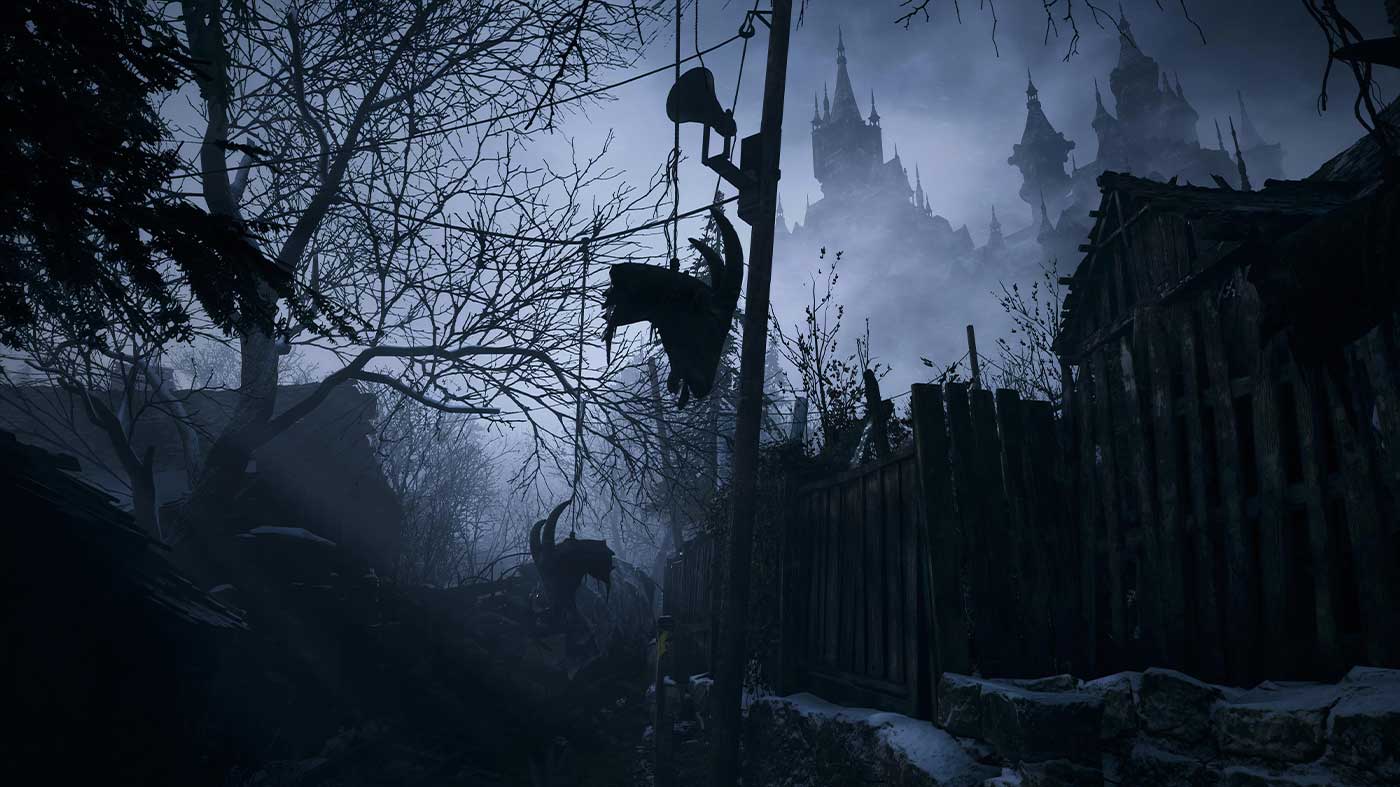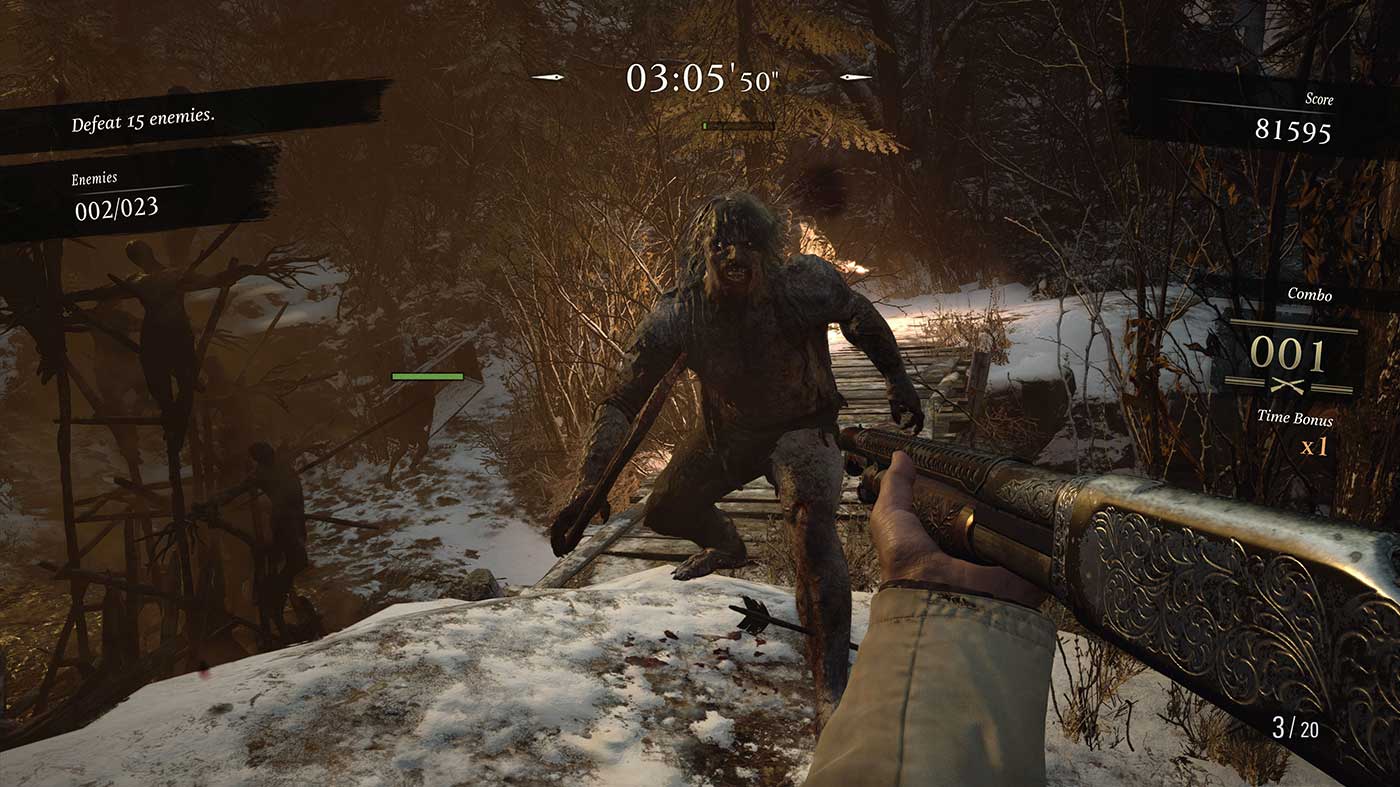While Capcom has been doing a great job with Resident Evil in recent times, their upward trend arguably began with Resident Evil 7. Upon revisiting that game earlier this year, I was taken aback by how the team at Capcom was able to do so much with so little. Before playing it, Village seemed to be doing the opposite, attempting so many things to the point where I’d worried it might be a bit too busy, losing some of that charm that the last three games have had. Thankfully, it hasn’t, and while Village is an entirely different beast from those that came before it, it will no doubt stand proudly in the Resident Evil pantheon.
I won’t go into the story too much – but Village follows on from the events of the last game. We once again play as Ethan Winters, who has since moved to Europe under witness protection and had a child with Mia. After sitting down for dinner one night, Chris Redfield, one of the series’ staple heroes, barges in, with some serious events quickly taking place. Chaos ensues, and Ethan finds himself on the outskirts of a mysterious village. His escort murdered; it’s here he begins his search for his daughter and find answers from Chris.
A rare direct sequel, Village attempts to continue the story of Ethan and weave itself into the already complicated series canon. In that regard, Village is a twofold success. It ties up many loose threads left hanging when the credits rolled in Resident Evil 7 and gives a great (if not hokey) explanation of how everything fits into the overarching canon. The result is a story that can be enjoyed by almost anyone who played the last game and satiate long-term fans looking for more connection to the previous games. But those jumping straight into Village may be a little bit lost, so be sure to watch Ethan’s recap in the menus before beginning.
RELATED: THE CHEAPEST COPY OF RESIDENT EVIL VILLAGE.
Given that there are so many wild theories being thrown around about certain characters’ identities and how things happen, I can almost guarantee the plot won’t satisfy everyone. But I struggle to envision somebody playing this game and not liking Ethan – he’s given a great run and becomes his own likeable character here.
In my Resident Evil 7 review, I spoke with great fondness for how that game managed to channel the identity of the original game while adding its unique twist. The same can be said for Village; while a direct sequel to Resident Evil 7, it’s using Resident Evil 4 as a base. The result is a game that’s invariably tense but only slight as fervently terrifying as Resident Evil 7 was. It feels appropriate that Village releases during the 25th anniversary of the series, as it feels like a greatest hits package of all the styles of tension and horror that have come before.
This is a sequel to Resident Evil 7 through and through, still played from a first-person viewpoint. Credit where credit is due, even though Village is bigger in practically every way than its predecessor, it never bombards you with constant jump scares. The tension, especially in the second lord’s region, is masterfully crafted. I was worried that with a more explicit focus on action, aspects like this would be neglected, but that’s most certainly not the case.
There’s definitely a bit more of an emphasis on action in Village, but the game incorporates a few new tricks to be more congruent with this new direction. Ethan can now immediately push an enemy back after blocking their advances – a slight touch but an integral one to prevent being surrounded. Ethan can also block off certain doorways to better control crowds. They’re small additions but helpful ones in the fight against more intelligent enemies.
The clear and obvious Resident Evil 4 DNA persists with The Duke. He’s this game’s version of the merchant, allowing you to buy and upgrade weapons as well as sell treasures. Every gun is still found in the game world – as it was in every Resident Evil game – but The Duke can upgrade them to pack more of a punch. He also sells recipes to craft ammo and can cook up ingredients found hunting animals in the village to increase Ethan’s stats permanently.
I raised concerns in my preview that being able to buy and craft ammo might mess with the game’s balance, removing the “survival” aspect. Thankfully, that doesn’t seem to be the case. The Duke’s stocks are limited, and all pickups feel pretty balanced across the board. I’d often find myself having to actively think about my inventory so that aspect still feels intact. But anyone looking for a challenge should consider starting on hardcore difficulty.
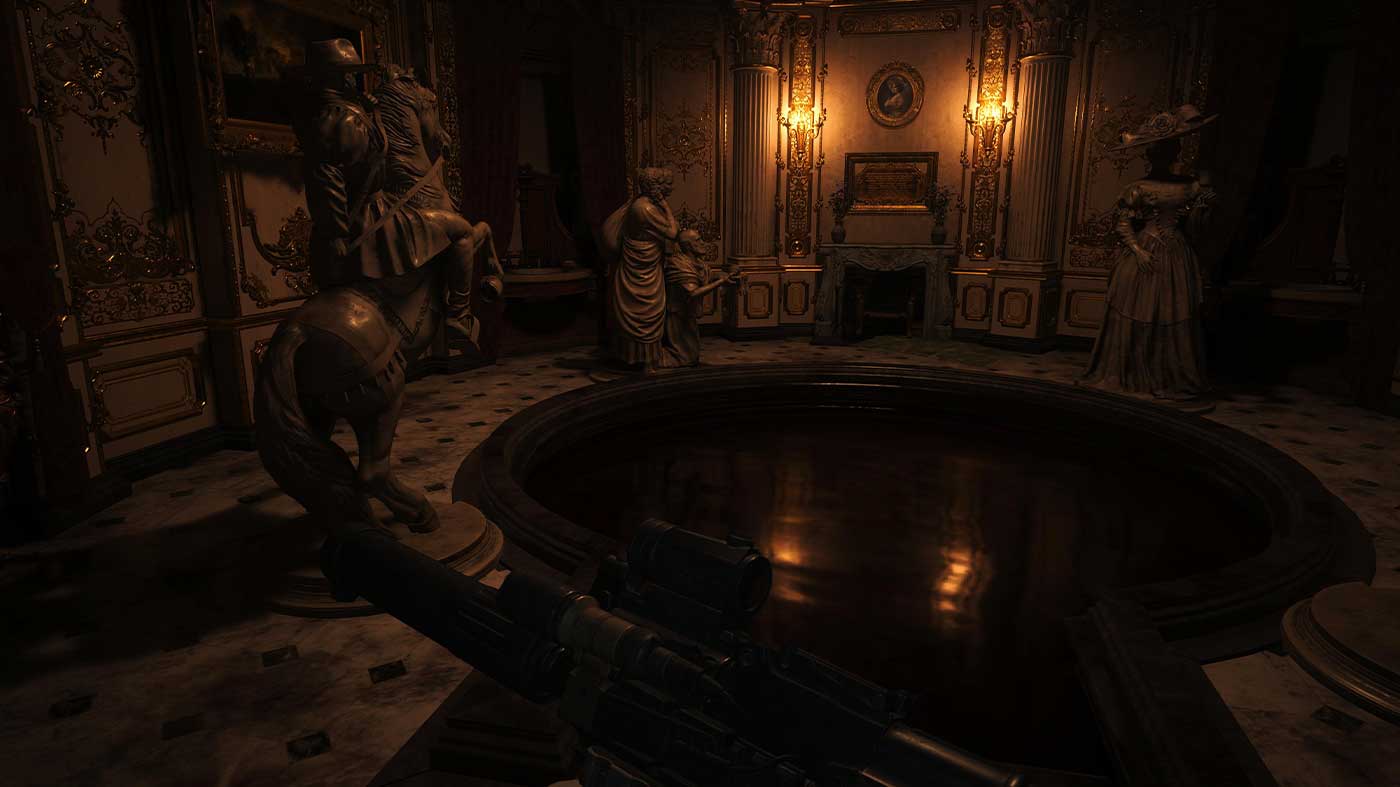
The general structure of the game sees you hunting the four lords of the village, each of which represents a specific theme or type of horror. Two of them, the Castle and the Factory, feel the most traditional. An equal mix of cinematic moments and classic Resident Evil exploration – though the latter will divide players with its bizarre tone. The other two, the Reservoir and House, feel like longer set-pieces than fully fleshed-out locations. Both tap into different themes. These two showcasing some great horror in a similar vein to P.T. and Resident Evil 7. I enjoyed all four, as they all offer up something new and exciting from beginning to end without the pacing suffering.
But it’s what Village does between these major areas that I enjoyed. Each time you revisit the Village, you’ll have a new item or key that’ll let you explore some more. It’s simple, classic Resident Evil, but the atmosphere in the Village itself is so thick and so inviting that I couldn’t wait to get back to find new secrets and treasures. It would amount to a little bit of exploration each time, but it helped sell the village and its surrounding areas as an actual location with heaps of history.
Without a doubt, Village is the biggest Resident Evil game in recent years. A blind play will easily take you upwards of twelve hours (perhaps even more) if you endeavour to find absolutely everything the village has to offer. But the game is still well geared for the ever-infamous speed run, too, much like classic Resident Evil, and feels very replayable. When finishing the game, The Mercenaries is also unlocked. Leveraging Village’s improved combat and enemy variety, it’s an arcade-like mode where you compete for a great score among four different areas. It’s Mercenaries in name only, honestly, but it’s a fun little distraction that gives you some wicked unlocks for the main story.
One thing always a given with recent Capcom games, and that’s whether it’ll deliver visually. While it’s a stark departure from what we’ve seen in recent games, Village is a true artistic achievement. The world that has been crafted feels not only lived-in but is teeming with atmosphere. Sporting some of the strongest art direction in the series, I was impressed with how good the game looked while maintaining a stable framerate. Even better, with ray tracing on, the game performs much smoother than I anticipated. There is a smidge of slowdown when outdoors, but otherwise, it’s a good experience and a tantalising taste of what next-gen consoles can do.
Such a commitment to presentation is especially evident in the sound design too. Guns rattle as you run with them, floorboards creak, and snow collapses as Ethan moves through this fascinating world. There are some great original pieces of music here too, but it’s the moments where there’s no music that are equally well done. Good sound design isn’t just great music and sound effects, it’s knowing where to ramp it up or dial it back, and Village nails it. Speaking of which, Ethan is the main attraction here, so it’s great that Todd Soley has stepped it up to make Ethan his own character with a great but hammy voice performance.
All in all, Resident Evil Village is a staunch reminder that Resident Evil is consistently reinventing itself. While Village isn’t the same vibe or the same kind of horror that Resident Evil 7 was, it’s still a strong outing in the series that’s bound to impress both new and old fans alike.



